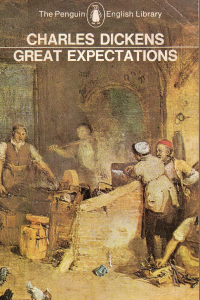Knowing how to write believable characters is vital for any fiction writer. A character that seems like a stock character – the hero, the villain, the orphan, the unwilling savior – can easily become too predictable. So how do you create a great character? There are several ways to make sure that your fictional characters draw readers into your imaginary world:
Be original and memorable with physical descriptions
Think of some of fiction’s best-loved characters. J.K. Rowling’s Harry Potter has a bolt-shaped scar on his forehead. The lawyer Jaggers in Charles Dickens’ Great Expectations is described as having a ‘great forefinger’ which he constantly wags and points at people (and even bites frequently before making a point). Details such as these set characters apart from stock character types. Unique body language and gestures as well as physical ‘flaws’ or distinguishing markers help to create vivid characters that readers are easily able to imagine brought to life.
What physical attributes should you focus on when writing characters? Think about how physical attributes might suggest certain elements of personality:
- Describe eyes carefully. This is one character attribute that often strays into cliché. Rather than describe the colour of characters’ eyes in vivid detail, think about other, more distinctive characteristics. Does your character have a nervous temperament? Then perhaps he might blink more than most people. Your characters’ eyes can say a lot about them, but body language and posture, gestures and actions are often even better for conveying distinctive, subtler character traits.
- Is your character short or tall? People often infer things about others based on their height. Dwarves in fantasy novels (such as The Lord of the Rings) are usually short and swarthy. As they are often miners, this further conveys that they are closer to the earth. It also might suggest that they are prone to short tempers due to widely known stereotypes about short people being feistier. Also consider the possible contradictions within a character’s appearance, however. When a conventionally ‘ugly’ character has a seductive or husky voice, for example, this creates a possible contradiction between readers’ impressions and expectations. This creates interest since your characters’ contradictory attributes creates a sense of unpredictability.
- Posture can say a lot about a character. Hunched shoulders might suggest anxiety, while a slouched back can suggest a sense of world weariness. This could also convey that a person has led a life of labour. As another example, many wealthy women in Victorian times had lessons in etiquette and good speech (‘elocution’), so a Victorian character from a privileged upper class position is likely to have very upright posture. Think about how traits such as this can set characters’ backgrounds apart. This will help you to create a fictional world populated with characters who reflect differences in privilege, power, and more, just as these differences manifest in real life.
Make fictional characters’ voices real
There are two levels to character voice. If your character is the Point of View character and narrator, the voice of narration should reflect the mind and personality of your character. In James Joyce’s short story ‘Clay’ from the story collection Dubliners, the POV character is a cook named Maria. Throughout the story, Maria’s thoughts are described in the third-person:
‘She hoped they would have a nice evening. She was sure they would but she could not help thinking what a pity it was Alphy and Joe were not speaking.’
Even though Maria is not the narrating character, a sense of her voice is conveyed by the simplicity of words used throughout the story (words such as ‘big’, ‘small’, and ‘nice’). The effect is that the style of narration conveys Maria’s personality: If the character were to speak in dialogue at any point in the story, the reader would most likely expect the character to speak in a similarly simple, unaffected way.
In addition to this technique through which you can use the narrator’s voice to mirror individual characters’ voices, dialogue helps you create distinctive characters. Here are some pointers on how to write believable characters using dialogue:
- Make dialogue mimic real speech. If you want your characters to feel real and not like stock archetypes, they should talk like real people. Think of how you greet friends and family. You probably use different levels of formality depending on the closeness of your relationship and the degree of respect demanded by the connection in question. A character might say ‘hey’ to a friend by way of greeting, while saying ‘hello’ to an elderly relative. Small variances in speech such as these make fictional characters’ dialogue more real.
- Make sure characters’ styles of speech fit their backstories. If a character has a troubled past, for example, think how this might have affected the way they express themselves: Are they sullen and terse? Timid? Belligerent?
- Think about colloquialisms (slang): Does your character use any quirky expressions specific to their age group, geographical location or image? A teenager is likely to have up-to-date slang, while an adult trying to be hip could use slang from a bygone era mistakenly. Think about what the specific types of words characters use suggest about them. Is a character who uses swear words frequently angry? Or are they simply expressive and indifferent to social taboos and ideas of propriety and politeness?
To create individual, distinctive character voices, create a checklist you can go through for each character. Ask yourself:
- What is my character’s social status? Is she privileged/underprivileged in relation to other characters? How does she talk to other characters as a result, and what does this say about her personality? (As an example, a character might be from a wealthy family but might speak kindly and unaffectedly to people of less privilege, suggesting that the character is not warped by social position and status).
- How old is my character? Does she speak typically for her age, or are there details about her speech that convey something out of the ordinary about her (for example, a young character who uses bigger words than normal for her age group can seem precocious or pampered).
- How does my character develop throughout the story, and what effect does this have on her voice? For example, in George Bernard Shaw’s play, the central storyline is a professor of phonetics’ attempt to turn Eliza Doolittle, a Cockney girl, into a ‘well-spoken’ lady. This change in voice brings about changes in the dynamics between characters and in the trajectory of the character’s choices.
Show character development
Even short novels should show character development. Characters should discover new things about themselves, other characters and their world in the course of a story. There are exceptions to this: a character’s unchanging stasis can be used to convey a sense of tragedy and inescapable ‘fate’, should this be the effect you want to achieve. It is important in this case to make sure there are other sources of story development that create forward momentum. One characterisation mistake beginner writers sometimes make is to focus on plot development to the exclusion of everything else.
How do you write character development into your story? There are several ways to make your characters believable by changing them over time:
- Vary your descriptive language to match your POV character’s age. A coming-of-age story provides an in-built structure for showing how your character changes over the course of your book. Make sure that your character does not speak and behave identically to his or her younger self once grown up. As an example, in Great Expectations, the book begins with the protagonist Pip as a young boy. By making Pip the Point of View character, Dickens presents his fictional world through a boy’s eyes, including larger than life adult figures and a child’s naivety. As the novel progresses and Pip grows older, the style of descriptive language shifts subtly as Pip’s impressions mature too.
- Give your characters core beliefs that are tested and renewed or altered. Every person has a set of core beliefs and values, and these are subject to change over time. Think about what your character’s ethical, moral or general world view might be. Is she or he puritanical? How does this affect how they interact with other characters in your story? Will their principled (but also possibly judgmental) outlook be tested during the course of the novel? A believable character is just as changeable (and sometimes contradictory) in outlook and opinion as real people are.
- How does your character’s environment affect her personality and worldview? If, for example, your character lives through a war, does this bring out fear or courage, pro- or anti-war sentiment? A character might discover an inner strength she or he never knew existed. This is an example of a momentous, potentially life-changing development. Remember not to neglect the small changes, such as changes in the way your characters express themselves or interact with those around them. These convey the way little things add up and shift a person’s outlook and likely responses to particular situations.
Creating believable characters means considering many aspects of real people and what distinguishes them from each other. Physical attributes provide one way to show your readers what types of people populate your fictional world. A unique character voice can be created by thinking about how a character’s backstory and psychology contribute to how they express themselves. Paying attention to lifelike character development also will help you set individual actants of your story apart. While some characters triumph over adversity, others might fail. Including this variety of personality type and character arc in your story will help to convince your reader that your fictional world is just as vivid, varied and interesting as our own.
What do you think is the most important advice for learning how to write believable characters?




4 replies on “How to write believable characters”
The best way to develop a character is to “show, don’t tell.” The reader must be able to ‘sense’ the character using all of his/her senses. It’s similar to setting a scene; you want the reader to have a sense of ‘being there.’ I can still close my eyes and see some of the rooms described by Tolstoy in War and Peace. It’s like I was pulled into the room and then blended in with all the other characters in the room. The author gives the reader a sense of ‘being there.’ Ok, maybe I don’t want to ‘be there’ in a Steven King story, but I think my point is made. 🙂
Hi Jim. Show, don’t tell is definitely important. Though I also like Ursula K. le Guin’s cautioning against it. Everything in moderation, I think. Sometimes telling is also necessary. Agreed on Russian authors – Chekhov is another writer who is excellent at characterization. Thanks for reading!
[…] Gender Specific DialogHow to Write Believable CharactersCharacter Motivation: How to Write Believable CharactersCreating Believable CharactersCreating […]
[…] characters have more realistic, accurate, and believable physical characteristics than most humans. Tomoko Kuroki (It’s You Guys Fault I’m Not Popular) is a Japanese pop […]